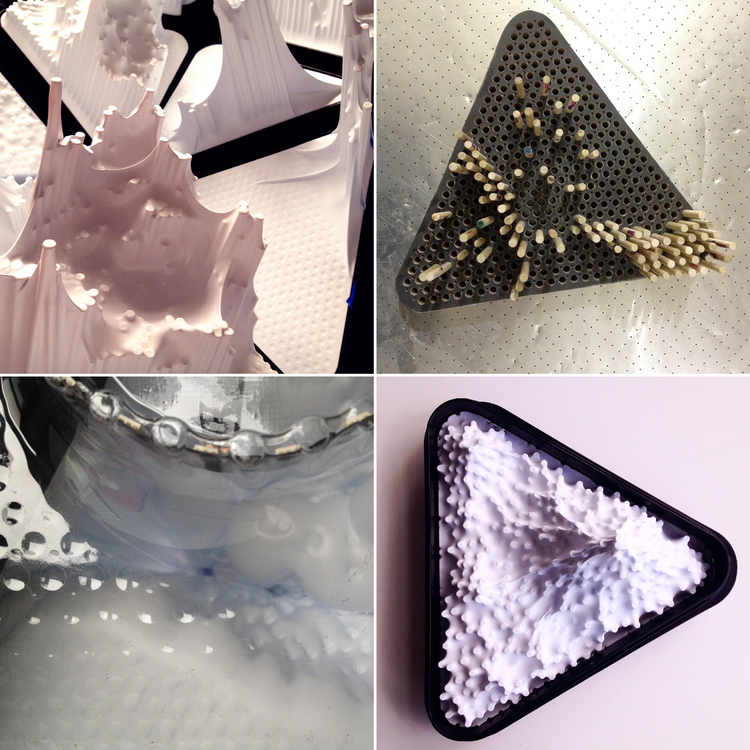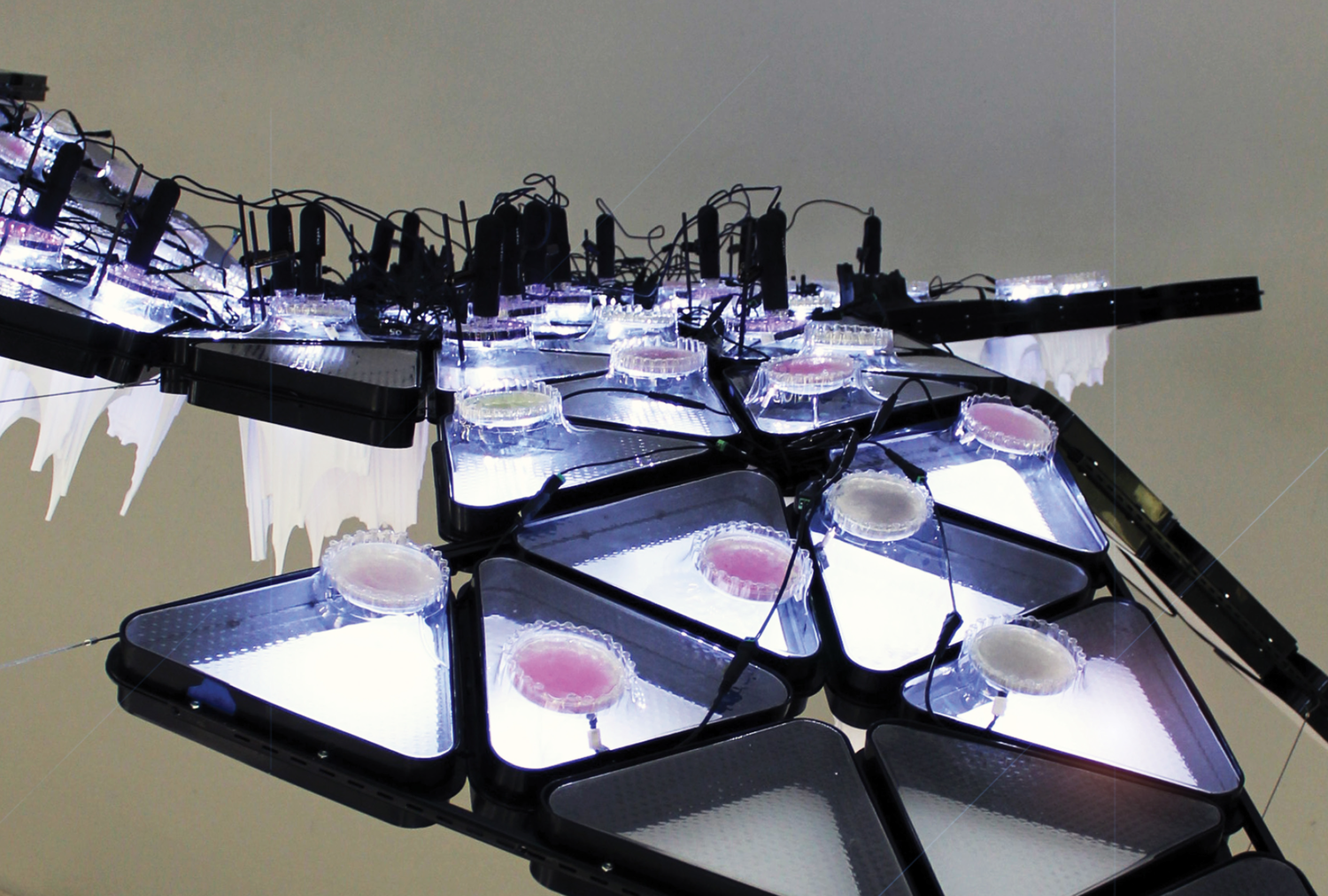Bio City Map Of 11 Billion
WORLD POPULATION IN 2110
Venice Biennale, 2014
Bio-City World Map is a cartographic installation based on the Dymaxion grid to communicate an all-encompassing view of population density in cities based on probabilistic census data. The map visualizes the earth as one entire urbanized place, instead of unconnected settlements, municipalities, and disparate regions. If we are anticipating growth at this rate almost everything in human society will be comprehensively stressed. This systemic pressure includes: water scarcity, food shortages, overcrowding, air quality depletion, and traffic congestion. The public must be made aware of the consequences related to uncontrolled growth. It is the first step in recognizing a universal challenge in this century. If we cannot foresee the impending difficulty, the potential solutions are hard to justify.
Our Bio City Map displays population density as a parametric graph on the front and the back is made with living biosynthetic transgenic matter. These living elements focus on twenty-five mega-cities, genetically designed and grown inside petri dishes. Our novel approach experimented with living populations that consisted of billions of bacterial cells. We chose colonies of E. coli as a method of demonstrating exponential population growth using synthetic biology. Population density was represented in two different forms of fluorescent transgenic E. coli under UV light. Glowing red E. coli represented future census projections. While green E. coli represented existing demographic conditions you would find in today’s cities. Micro-stencils derived from CAD files shaped the E. coli into specific geometries that display the current geopolitical boundaries in cities. Genetic modifications of benign strains of E. coli were carried out at Genspace, the world’s first community based biotech laboratory and at Terreform ONE. Genes cloned from bioluminescent oceanic animals, such as jellyfish and coral, were introduced into bacteria by transformation. These genes encoded information that would enable our transformed microbes to synthesize either GFP or RFP, two brightly fluorescent proteins.
The transformed E. coli were then incubated overnight on Petri plates containing agar based media with antibiotics, to select our genetically modified strains. Individual bacteria divided through repeated population doublings to produce colonies containing millions of cells. Each selected cell now expressed our cloned proteins. We then used high-speed centrifugation to concentrate our colonies of transgenic E. coli. A novel method was used to produce stencil derived bacteria prints for long-term archival quality gallery display and to underscore the highest zones of growth. Ultimately, the bacterial shapes grow to reveal variant patterns of transformation in urban regions. By using bio-synthetic materials, we expect to narrow the gap between idealized mathematical interpretations and observable events in nature. The Bio City Map is an interdisciplinary project that involved cartographers, urban planners, biologists, and architects to complete a manifestation of future population density. We argue that most nations cannot view the effects of planetary population density through the lens of just one city or region. Instead we aimed to reveal the long-range effects of immense human growth in areas of present and speculative urban intensity.
Credit: Mitchell Joachim, Nurhan Gokturk, Melanie Fessel, Maria Aiolova, Oliver Medvedik.
Research Fellows: Chloe Byrne, Keith Comito, Adrian De Silva, Daniel Dewit, Renee Fayzimatova, Alena Field, Nicholas Gervasi, Julien Gonzalez, Lucas Hamren, Patty Kaishian, Ahmad Khan, Laasyapriya Malladi, Karan Maniar, Ricardo Martin Coloma, Puja Patel, Merve Poyraz, Mina Rafiee, Mahsoo Salimi, Manjula Singh, Diego Wu Law.
Media: transgenic E. coli, parametric thermoformed styrene plates, carbon fiber rods, steel strut channels, USB microscopes 400x, multiport high-speed USB hubs, ultraviolet LED lighting strips, MAC Mini.
Size: 15’ x 9’ x 3’


















